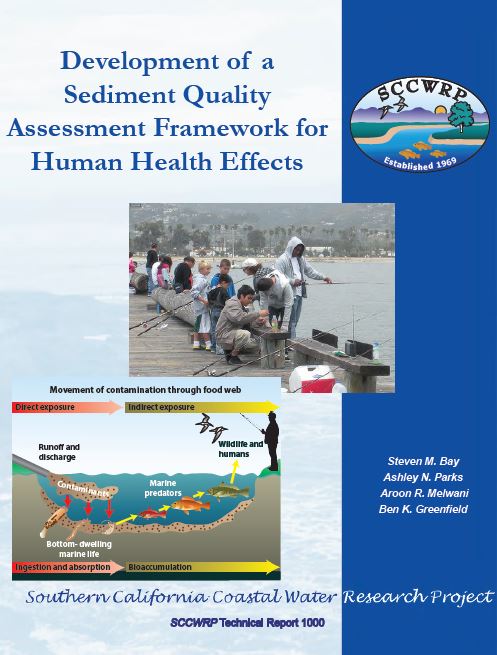Draft framework unveiled for assessing human health impacts of contaminated sediment

SCCWRP and its partners have completed development of a standardized sediment assessment framework intended to better protect the health of humans who consume seafood caught in enclosed bays and estuaries in California.
The draft framework, published as a SCCWRP technical report in October, is being considered for adoption by the State Water Board to define for environmental managers how to implement California’s Sediment Quality Objective (SQO) for protection of human health.
The human health SQO – one of three adopted by the State Water Board in 2008 for enclosed bays and estuaries – is a one-sentence regulatory target that calls on sediment contamination to not be present “at levels that will bioaccumulate in aquatic life to levels that are harmful to human health.”
SCCWRP and its partners have spent more than a decade conceptualizing, building and vetting the human health SQO framework to create a standardized technical definition of what it means to be in compliance with this regulatory target.
California’s environmental management community will be able to use the framework to inform decision-making on issues like setting appropriate sediment clean-up targets.
The draft framework relies on standardized, quantitative indicators of sediment contamination’s human health effects to score the quality of sediment in enclosed bays and estuaries. Indicator scores are classified into condition categories ranging from “unimpacted” to “clearly impacted.”
The human health framework is designed to complement California’s SQO assessment framework for the protection of sediment-dwelling aquatic life, which was adopted by the State Water Board and approved for regulatory use in enclosed bays and estuaries in 2009. Both frameworks use standardized, quantitative indicators with defined thresholds to provide consistency and statewide comparability.
There is not yet an approved assessment framework in place to support California’s third SQO, which applies to the protection of fish and wildlife. Under the human health SQO framework, sediment sampling sites are assessed in two main ways:
-
- Chemical exposure analysis: Sportfish tissue chemistry data are compared to the advisory sportfish tissue contamination levels developed by California’s Office of Environmental Health Hazard Assessment (OEHHA).
- Site linkage analysis: The linkage between site sediment contamination and tissue contaminant concentration is evaluated.
The framework features a three-tiered assessment process that provides capability to adapt the assessment to a wide range of situations. The framework also makes use of a food web bioaccumulation model to evaluate site linkage.
Assessments using the framework will be focused around PCBs (polychlorinated biphenyls) and chlorinated pesticides – two major chemical drivers of seafood consumption risk.
SCCWRP and its partners began conceptualizing pieces of the draft framework in 2005, and started developing the technical aspects in 2009 with the guidance of a scientific steering committee as the project came into sharper focus. A stakeholder advisory committee that included participation by SCCWRP member agencies also played a key role in shaping the framework.
Final refinements to the framework, which were completed over the past year, included harmonizing tissue chemistry evaluation thresholds with OEHHA’s seafood consumption advisory tissue levels, completing a four-year test drive of the framework in the greater Los Angeles Harbors area, and refining the bioaccumulation model used to evaluate sediment contamination.
The State Water Board will solicit public comments on the draft framework through the end of 2017, and hold an informational public workshop on December 5, 2017 in Sacramento. The draft framework is scheduled to be considered for adoption by the State Water Board in March 2018.
More news related to: Sediment Quality, Sediment Quality Assessment Frameworks, Top News